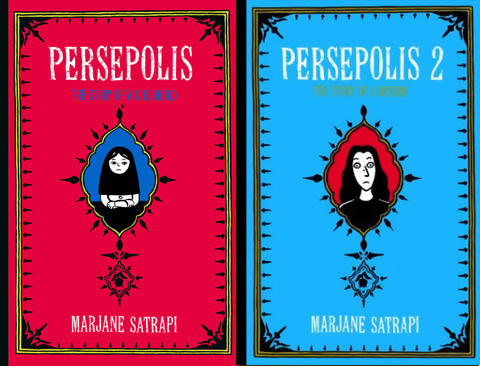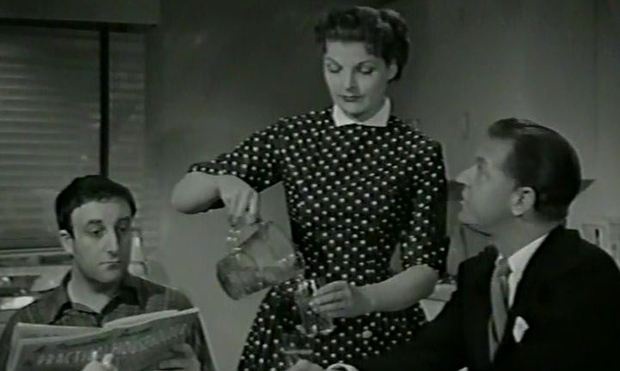
In the eyes of many teachers and parents, a novel is not a novel when it is graphic — as in, graphic novel, with illustrations and images, not necessarily explicit in content (when did “graphic” come to connote negativity anyway?) Educators who tell their students to put the graphic novel back on the shelf — in favor of a more wordy tome — still tend to perceive this form of literature as nothing more than a bound, cartoonish comic strip aimed at childish readers or nerdy boys. Not so! Graphic novels are not your father’s Dandy or Beano (though, in themselves are entertaining too).
Some critically acclaimed and riveting works have recently debuted in graphic form, and the genre is holding its own and slowly proving its worth. The stories both true and imagined are rich and moving, and the illustrations, far from detracting the eye, add gravitas and depth. And, the subjects now go far beyond the realm of superheroes, zombies and robots — they walk us through all that is to be human: tragedy, atrocity, love, angst, guilt, loss, joy.
A few recent classics come to mind: Persepolis, a French-language, autobiographical graphic novel by Marjane Satrapi; Logicomix: An Epic Search for Truth, a graphic novel about the quest for logic and reason in mathematics, by Apostolos Doxiadis; Fun Home: A Family Tragicomic by Alison Bechdel; Maus I: A Survivor’s Tale: My Father Bleeds History, by Art Spiegelman; Blankets an autobiographical graphic novel by Craig Thompson.
From Washington Post:
A Young girl, a primary grade-schooler with a well-worn library card, was enthusiastically reading a riveting memoir when a stern tone descended upon her.
“What is that?” the teacher asked/accused.
“It’s a graphic novel,” came the girl’s reply.
Such works, the girl was told, were unacceptable for classroom “reading time,” let alone for a book report. The teacher’s sharp ruling boiled down to a four-word excuse for banishment:
“Graphic. Novels. Aren’t. Books.”
Sigh.
Here we go again…
Really? Two decades after Art Spiegelman’s landmark Holocaust graphic novel “Maus” won the Pulitzer Prize and helped stake a fresh claim for comics as literature — paving the way for the appreciation of such works as “Persepolis” and “Blankets” and “American Born Chinese” — do a significant number of teachers and administrators remain mired in such backward thinking?
Unfortunately, my rhetoric is rhetorical. These curricular “world-is-flat’ers” are still thick on our school grounds. But it’s time for the culture’s tectonic plates to more rapidly force a shift in academic thought.
As we step into 2014, this lingering bias in curriculum needs to cease. We fervently urge the least enlightened of our educators to catch up with the rest of the class. And to make our case, let us present Exhibit A:
The young girl who faced that rebuke of illustrated books was a relative of mine. And that book (a-hem) in question was “Stitches: A Memoir,” acclaimed author David Small’s poignant personal story of a dysfunctional childhood home — including his adolescent battle with throat cancer, which may have been caused by his doctor-father’s early over-embrace of X-ray radiation. In Small’s masterful prose and liquid pictures, we vividly experience the voiceless boy-patient’s raw emotions.
Even four years ago, quite a few people would have begged to differ with that grade-school teacher. “Stitches” climbed the bestseller list of the New York Times, which deemed the book worthy of review; was named one of the best books of the year by such outlets as Publishers Weekly; and was a finalist for the 2009 National Book Award for Young People’s Literature. No less than Pulitzer Prize-winning cartoonist/author/playwright/screenwriter Jules Feiffer said aptly of Small’s masterpiece: “It left me speechless.”
Of the teacher’s wrong-headed thinking, I was left speechless. Her decision was not a mere judgment against one book, but an ignorant indictment of all graphic novels. As blanket criticism, it was unabashedly threadbare.
Consider my commentary here, then, to be a criticism of that criticism. Because what the larger academic problem calls for is not damnation, but persuasion. A struck match. Into Plato’s cave, let us bring truer illumination.
What follows is not some broad indictment of modern American education. I was born into a brood of teachers — the family crest might as well be a chalkboard — and I deeply value what too often is one of the nation’s more thankless and underpaid cornerstone careers. Plus, as an artist who has spoken to thousands of impressive educators — many of whom appreciated my history-themed syndicated comic strip — I applaud those who thoughtfully and passionately help inform and shape young minds, while keeping an open mind themselves. On this front, so many of them “get” it.
What this essay is, at heart, is an extended hand in the name of better understanding — especially as our schools are filled with so-called “reluctant readers” and other struggling learners. We face an educational imperative: Why not use every effective teaching tool at our disposal? Decades of studies have shown the power of visual learning as an effective scholastic technique. Author Neil Gaiman (winner of the Newbery and Carnegie medals for children’s lit) recently noted that comics were once falsely accused of fostering illiteracy. We now know that comics — the marriage of word and picture in a dynamic relationship that fires synapses across the brain — can be a bridge to literacy and a path to learning. Armed with that knowledge, the last thing we need blocking that footbridge is the Reluctant Teacher.
Fortunately, 2013 rises to aid our cause. It was a banner year for graphic novels; top authors ranged from a young hip-hop fan to a heroic septuagenarian congressman writing his first comic — and in between were a couple of world-class cartoonists who also happen to be widely recognized educators.
Great works help beget great change. So here, then, is our examination of 10 stellar graphic novels and illustrated books from the year past (all equally fit for adult consumption, to boot). Because the writing is on the classroom wall. As generations are weaned on the Internet, our culture grows ever more visual. And the take-home lesson is this:
Let us meet our young minds where they live.
Let us smartly employ the resources of visual learning.
Read the entire article here.
Image: Persepolis 1 and Persepolis 2, book covers by Marjane Satrapi. Courtesy of Marjane Satrapi / Wikipedia.



 Do you prefer the Beatles to Beethoven? Do you prefer Rembrandt over the Sunday comics or the latest Marvel? Do you read Patterson or Proust? Gary Gutting professor of philosophy argues that the distinguishing value of aesthetics must drive us to appreciate fine art over popular work. So, you had better dust off those volumes of Shakespeare.
Do you prefer the Beatles to Beethoven? Do you prefer Rembrandt over the Sunday comics or the latest Marvel? Do you read Patterson or Proust? Gary Gutting professor of philosophy argues that the distinguishing value of aesthetics must drive us to appreciate fine art over popular work. So, you had better dust off those volumes of Shakespeare. Professor of Philosophy Gregory Currie tackles a thorny issue in his latest article. The question he seeks to answer is, “does great literature make us better?” It’s highly likely that a poll of most nations would show the majority of people believe that literature does in fact propel us in a forward direction, intellectually, morally, emotionally and culturally. It seem like a no-brainer. But where is the hard evidence?
Professor of Philosophy Gregory Currie tackles a thorny issue in his latest article. The question he seeks to answer is, “does great literature make us better?” It’s highly likely that a poll of most nations would show the majority of people believe that literature does in fact propel us in a forward direction, intellectually, morally, emotionally and culturally. It seem like a no-brainer. But where is the hard evidence? The official start of summer in the northern hemisphere is just over a week away. So, it’s time to gather together some juicy reads for lazy days by the beach or under a sturdy shade tree. Flavorwire offers a classic list of 30 reads with a couple of surprises thrown in. And, we’ll qualify Flavorwire’s selection by adding that anyone over 30 should read these works as well.
The official start of summer in the northern hemisphere is just over a week away. So, it’s time to gather together some juicy reads for lazy days by the beach or under a sturdy shade tree. Flavorwire offers a classic list of 30 reads with a couple of surprises thrown in. And, we’ll qualify Flavorwire’s selection by adding that anyone over 30 should read these works as well.